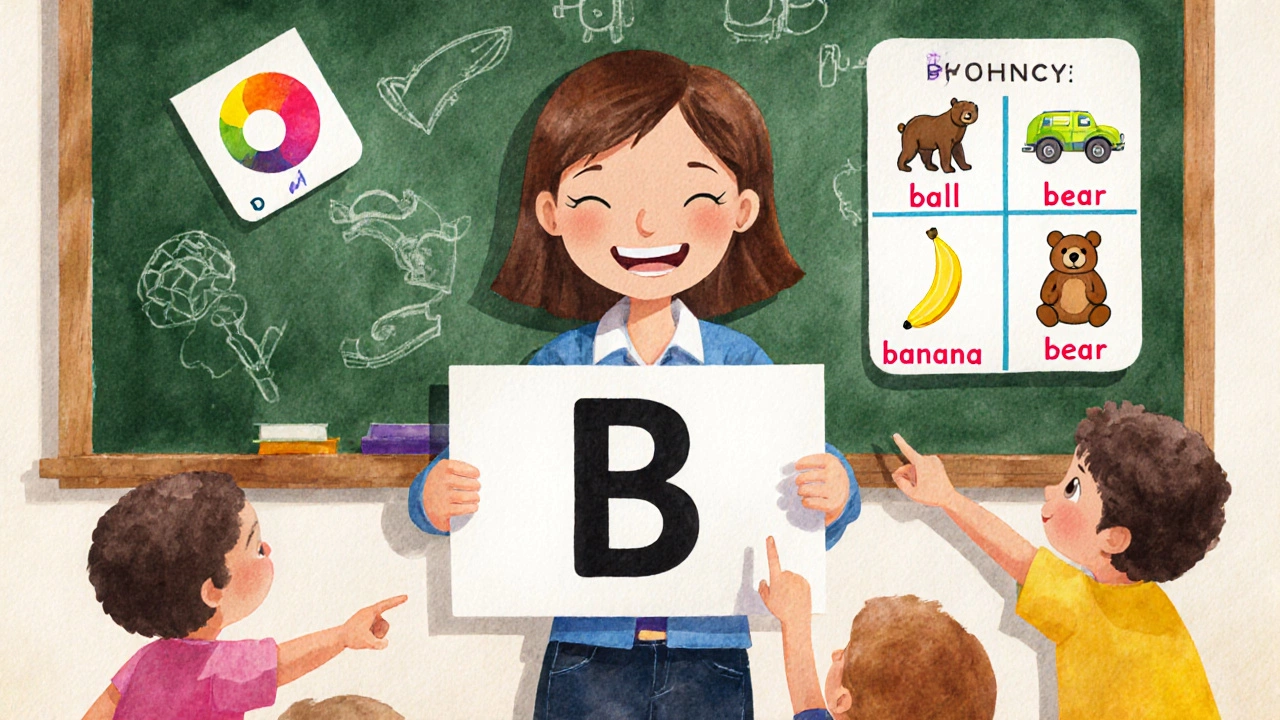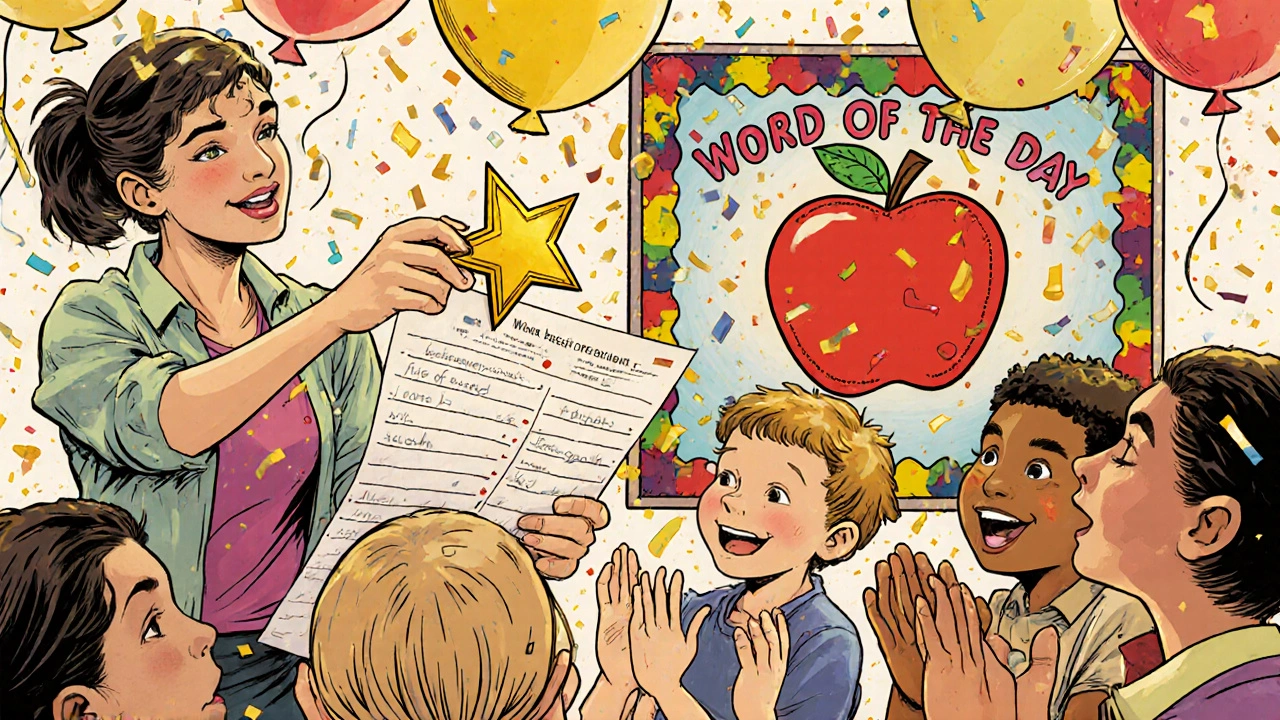When you step into a classroom of absolute beginners, the goal is simple: turn silence into confident speech. English teaching for beginners is the process of introducing the English language to learners with little or no prior exposure, focusing on listening, speaking, reading, and writing fundamentals. Success hinges on three pillars - clear objectives, relatable materials, and consistent practice. Below you’ll find a step‑by‑step roadmap that works whether you’re a volunteer tutor, a new teacher, or a parent homeschooling a child.
Set Up the Learning Environment
Before the first word is spoken, create a space where learners feel safe to make mistakes. A bright room, a few visual cues, and a predictable routine lower anxiety. Keep chairs in a circle or small groups so eye contact is easy, and display simple English posters (numbers, colors, everyday objects) at eye level.
- Use real‑life objects (a cup, a book) to label the environment.
- Limit background noise - soft instrumental music can help focus.
- Establish a greeting ritual: “Hello, how are you?” followed by a smile.
These habits signal that English is a tool for communication, not a test.
Start with Phonics and Pronunciation
Phonics is the method of teaching reading by linking sounds to letters, helping learners decode words early on. Begin with the 44 English sounds, but introduce them in bite‑size groups (e.g., /b/, /p/, /m/). Use visual mouth diagrams or videos to show tongue placement.
- Show the letter, say the sound, have students repeat.
- Play a quick “sound hunt” where learners point to objects that start with the sound.
- End with a chant: "B b‑ball, P p‑pen, M m‑mouse".
Consistent short drills (3‑5 minutes) stay in short‑term memory without exhausting attention.
Introduce Core Vocabulary Through Context
Pick themes that match learners’ daily lives - greetings, family, food, school. For each theme, use Vocabulary Flashcards - cards that pair an image or word in the native language with its English equivalent, encouraging visual recall. Show the card, say the word slowly, have students repeat, then ask a simple question using that word.
Example: Show a picture of an apple.
- Teacher: "Apple" (pointing)
- Students: repeat "Apple"
- Teacher: "What is this?" → Students answer "Apple".
Rotate cards every 10 minutes to keep the pace lively.

Choose an Effective Teaching Method
Different methods suit different class sizes and learner goals. Below is a quick comparison of three popular approaches for absolute beginners.
| Method | Key Feature | Pros for Beginners | Potential Drawbacks |
|---|---|---|---|
| Grammar‑Translation | Focus on rules and translation. | Clear structure; good for written accuracy. | Low speaking practice; can be boring. |
| Communicative Approach | Real‑life interaction prioritized. | Boosts confidence; natural language use. | Requires more classroom management. |
| Total Physical Response (TPR) | Learning through commands and movement. | Highly engaging; low stress. | Limited for abstract grammar. |
For most beginners, a blend works best: start with TPR to build confidence, layer in Communicative activities for dialogue, and sprinkle Grammar‑Translation for written reinforcement.
Design Interactive Activities
Active participation cements new language. Here are three low‑cost ideas you can run daily.
- “Simon Says” in English - use simple verbs (jump, clap). Learners follow commands, reinforcing verb‑action links.
- Picture Storytelling - give a sequence of three images; students create a short story using past‑tense verbs.
- Role‑Play Market - set up a mock shop with price tags. One student is the seller, another the buyer, using phrases like "How much?" and "I want that".
Keep the language level within the learners’ comfort zone (A1‑A2) and model the dialogue first.
Assess Progress Regularly
Simple checks guide you and reassure learners. Use an Assessment Rubric - a clear chart that rates performance on listening, speaking, reading, and writing components with three levels: Emerging, Developing, Proficient.
- Listening: Can they follow a 30‑second greeting?
- Speaking: Can they introduce themselves with name and age?
- Reading: Recognize five high‑frequency words.
- Writing: Trace and write their name.
Document results weekly; celebrate small wins with stickers or a “Word of the Day” board.

Leverage Technology When Possible
Even low‑budget classrooms benefit from free apps. ESL Classroom tools like Duolingo for Schools, Quizlet, and YouTube Kids provide short videos and interactive quizzes. Assign 5‑minute video homework, then discuss it in class to reinforce comprehension.
Remember: technology supplements, not replaces, human interaction. Use it to expose learners to native pronunciation and varied accents.
Key Takeaways
- Build a safe, predictable environment; routine reduces fear.
- Start with phonics and simple pronunciation drills.
- Introduce vocabulary through visual flashcards and real objects.
- Blend teaching methods - TPR for movement, Communicative for dialogue, Grammar‑Translation for accuracy.
- Use interactive games, role‑plays, and regular rubrics to track growth.
- Integrate free digital tools for extra exposure.
Frequently Asked Questions
How many new words should I introduce per lesson?
For absolute beginners, five to seven concrete nouns or verbs work best. Too many overwhelm short‑term memory, while a small set allows repetition across activities.
Is it okay to use the learners' native language?
Yes, sparingly. A quick translation can clarify meaning, but the goal is to keep English as the primary medium after the first few minutes.
How long should each class be for beginners?
Keep sessions between 30 and 45 minutes. Young learners especially have limited attention spans; break the time into short segments (warm‑up, main activity, review).
What assessment tools are free and reliable?
Google Forms for quizzes, Kahoot! for live games, and the free rubric templates from the British Council work well. Pair them with your custom rubric for consistency.
How can I motivate adult beginners who feel self‑conscious?
Set realistic, personal goals (e.g., ordering food in English). Celebrate each milestone publicly, use peer compliments, and provide low‑stakes speaking opportunities like "quick chat corners".
Teaching English to beginners is a marathon, not a sprint. By grounding lessons in clear phonics, relatable vocab, active methods, and gentle assessment, you’ll see shy learners turn into confident speakers faster than you imagine.
